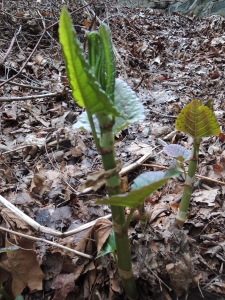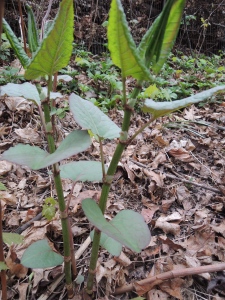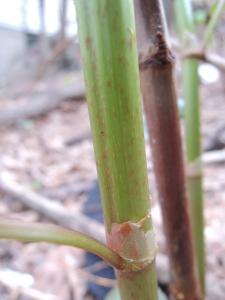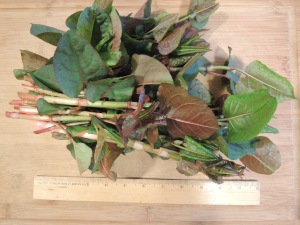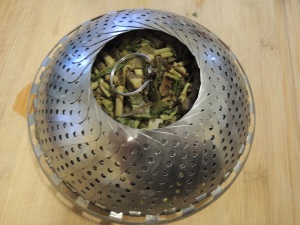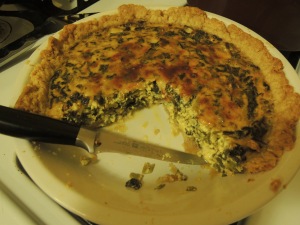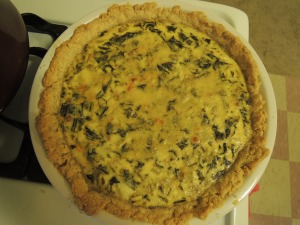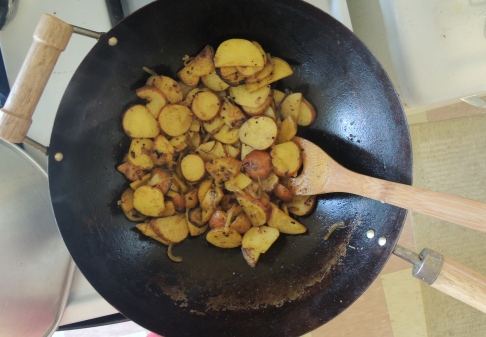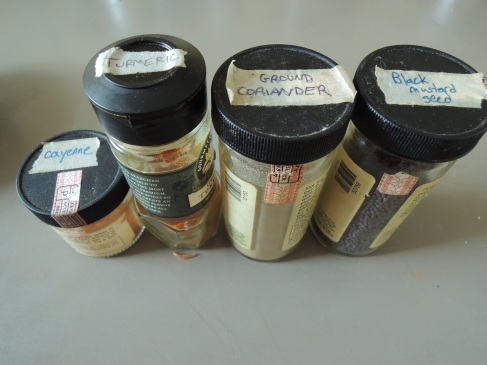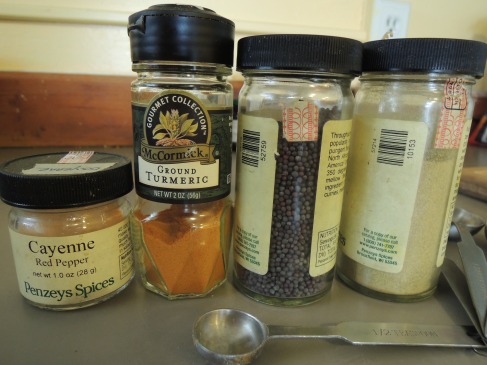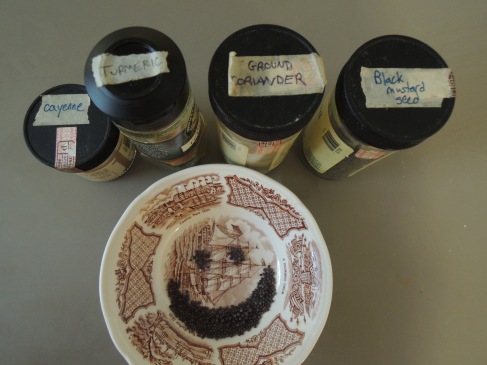I found some free greens this week! In my own backyard!
Japanese knotweed is a tough invasive here in the US. Before this spring, I’d read in many places that knotweed shoots are edible, and even that they taste like rhubarb. Now, I love picking my own food and I pick crazy things like Cornelian cherries and laboriously put them through a food mill to make jam two Christmases in a row. But I have noticed that sometimes foragers claim a food is edible, and they’re pretty much speaking only literally. Technically, it’s edible, but I don’t see much reason to eat it. I mean, if it’s not at least as tasty as kale, I can just go to the store/farmer’s market and buy some kale.
That is to say, I’m not committed to eating wild food for its own sake, though it is fun. It has to taste good too.
I really love rhubarb though, so I thought, if it tastes like rhubarb, maybe it’s worth trying. Being dubious, I just picked a few shoots at first and steamed them to see if they were any good.
Nope, not rhubarb, but to me they had exactly the lemony taste of marinated artichoke hearts. Tasty: check. Striking a blow against invasive species via eating: check. I picked a bunch more and made a quiche.
Of course, an important disclaimer about picking wild food: never eat anything that you pick unless you know for sure what it is. Ask an expert.
Japanese knotweed has heart-shaped leaves and green stems with red stippling, like this:
The only time they’re edible is when the shoots are young–they’re best to harvest when they’re 6-8 inches long, but up to 12 inches is OK. At this size, you can eat the whole thing: stem, young leaves, and all. It develops a bitter taste if it gets much larger than that, and the stems toughen. So harvest them soon! In upstate New York they probably won’t be small enough to eat for much longer.
One important note: because Japanese knotweed is very very invasive and can sprout from cut pieces, be very careful not to spread it! As the Richmond Land Trust says, “Don’t even think about composting it.” Don’t throw pieces of it in your backyard or anyone else’s; if you have bits left over from the recipe and you need to get rid of them, you can drop them where you harvested them so at least you’re not spreading them to a new area. The simplest thing is just to eat all that you harvest.
I guess I’m a convert. While the quiche was baking I went back and harvested more shoots for some future recipe. Do you have any ideas for what to do with them? I’m all ears. Have you eaten any invasives lately?
Japanese knotweed quiche
Crust:
1 1/4 c flour
7 Tbs cold salted butter
3 or more Tbs ice water
Filling:
8 oz young Japanese knotweed shoots, 6-8 inches long (about 2 cups when cooked)
3 cloves garlic
2 Tbs olive oil
2 oz cheddar cheese, grated or cut into little pieces
3 large eggs
1 cup whole milk
1/2 tsp salt
freshly ground black pepper
1-2 oz grated parmesan
1. To make crust: Add flour, salt, and sugar to a large bowl. Cut the butter into thick slices and add it to the bowl. Cut the butter into the flour using a pastry cutter or two knives, or use your fingers. Continue until the butter lumps are small but visible, about the size of a pea.
2. Add 3 tablespoons ice water. Mix and squeeze the dough together with your hands; see if the dough clumps together into one big ball when you squeeze it. If it’s too dry to gather together, continue to add ice water a tablespoon at a time until it comes together. Wrap in plastic and refrigerate for 15 minutes or more (or if you’re impatient like me, don’t bother).
3. Roll out your pie crust between two pieces of waxed paper. Remove the top piece of waxed paper, then flip the crust over onto the pie plate.
4. To make filling: Chop the knotweed, leaves and all, into 1/2-inch pieces. Steam for 5 minutes or until tender. Mince the garlic and saute in the olive oil.
5. In a large bowl, beat the eggs. Mix in the cheddar, milk, salt, pepper, half of the parmesan, and the knotweed and garlic.
6. Pour into crust. Top with the other half of the parmesan. Bake at 375 degrees for 30 minutes, or until the center is set and the top is browned (in my oven, after 30 minutes it looked like this and was not set; it took about 20 minutes extra to cook fully).
